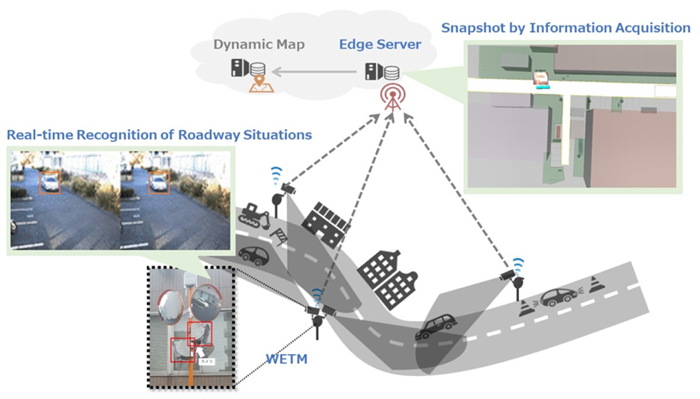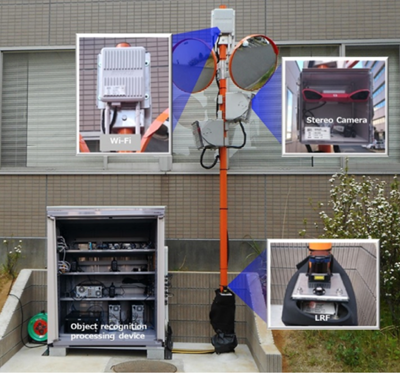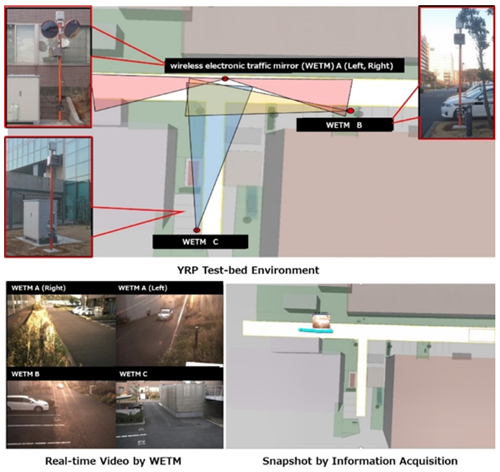For Realizing an Intelligent Transport Infrastructure Utilizing 5G Ultra-low Latency
~ Real-time recognition of roadway situations by using Wireless Electronic Traffic Mirrors (WETMs) built-in sensors ~
June 7, 2018
National Institute of Information and Communications Technology
Highlights
- Real-time recognition of roadway situations by using wireless communications assumed as the 5th generation (5G) ultra-low latency communications.
- Acquisition of location, speed and so on for autonomous mobilities such as vehicles by using “Wireless Electronic Traffic Mirrors (WETMs)” built-in sensors
- Expectation of an intelligent transport infrastructure to avoid mobility collisions and to predict movement.
Summary
Background
Achievements
Future Prospects
Appendix



Technical Contact
Chang-Woo Pyo, Kentaro Ishizu, Fumihide Kojima
Wireless System Laboratory
Wireless System Research Center
Tel: +81-46-847-5098
E-mail:






















Media Contact
Sachiko Hirota
Press Office
Public Relations Department
Tel: +81-42-327-6923
Fax: +81-42-327-7587
E-mail:





















